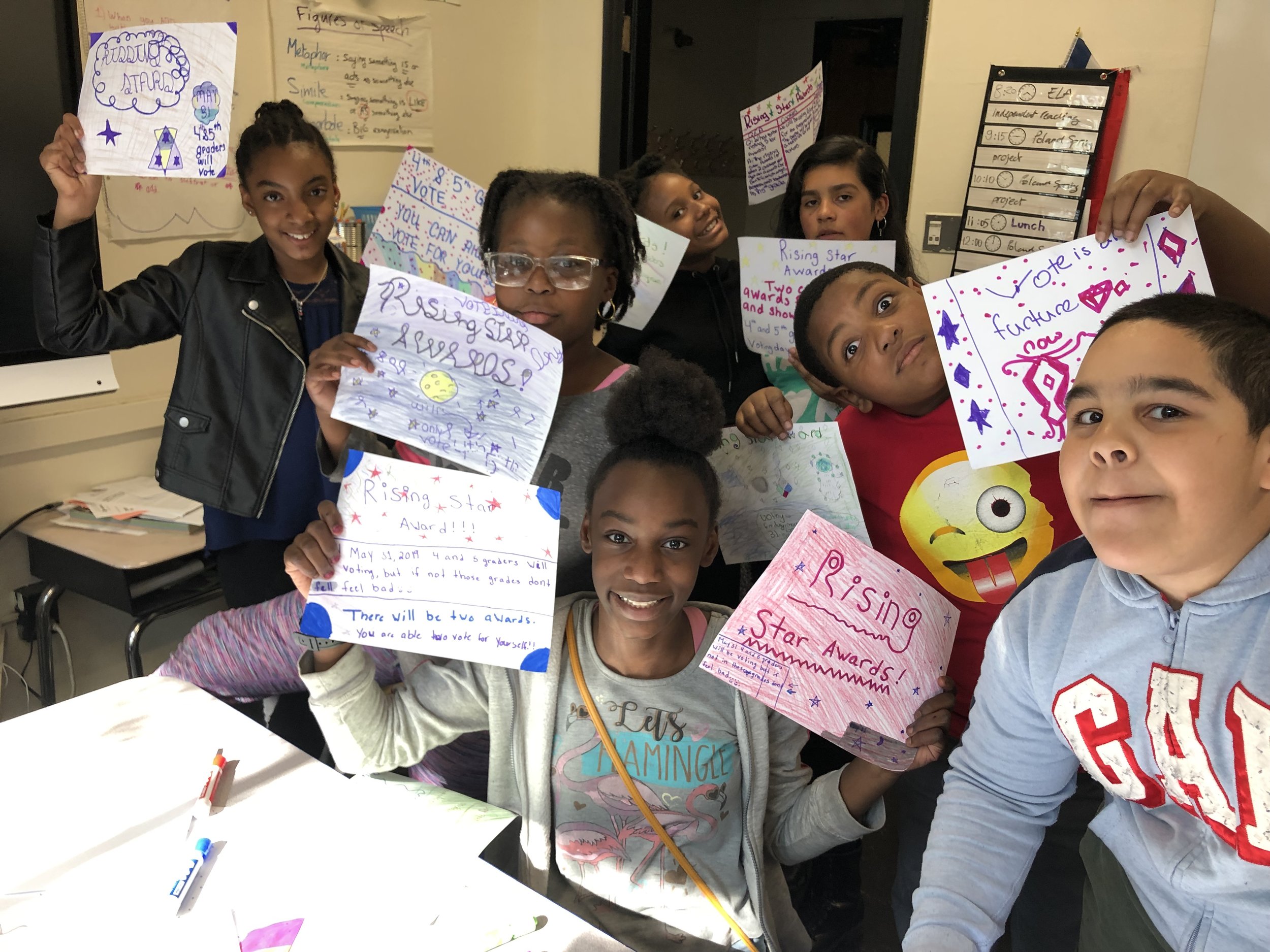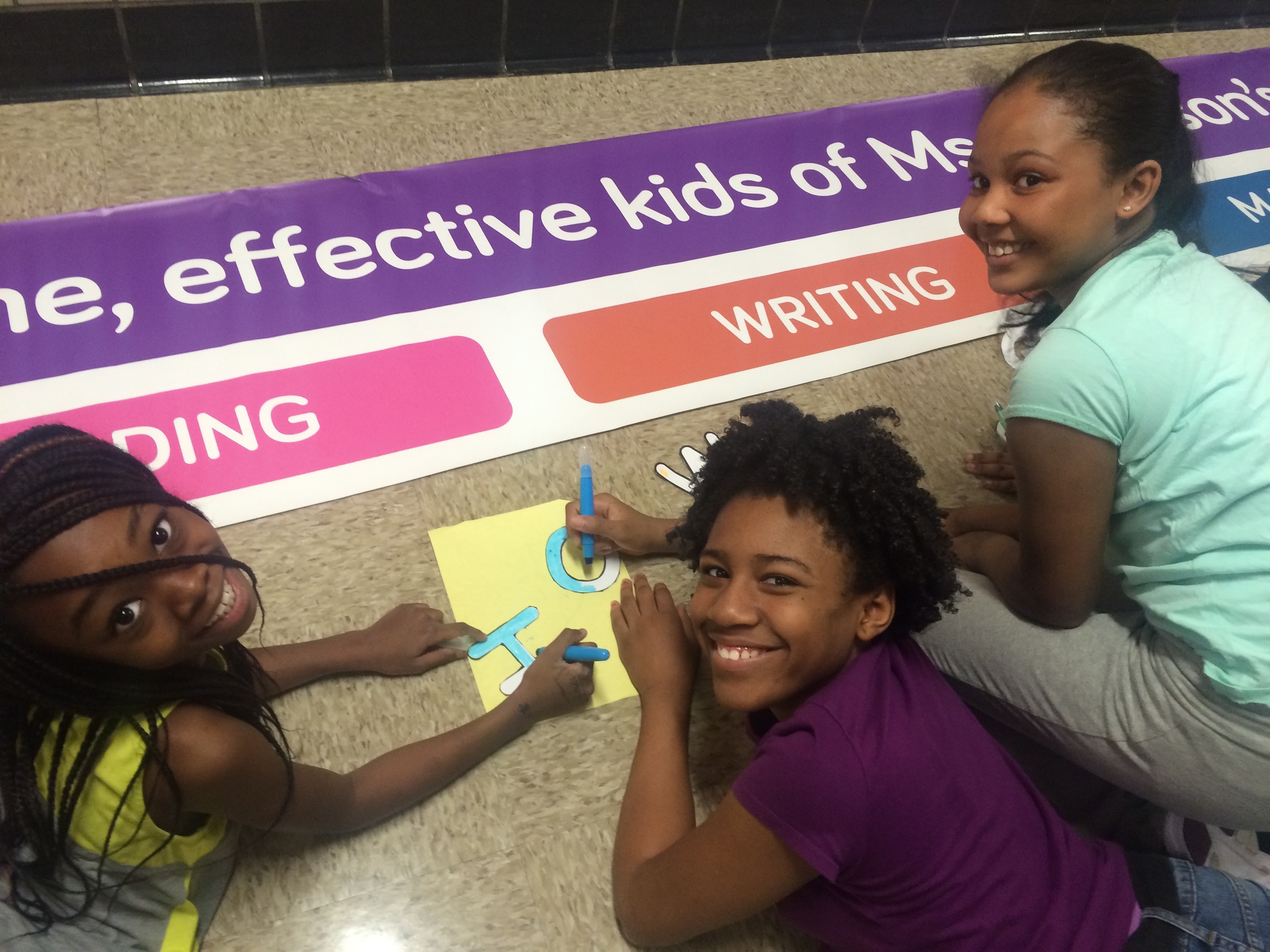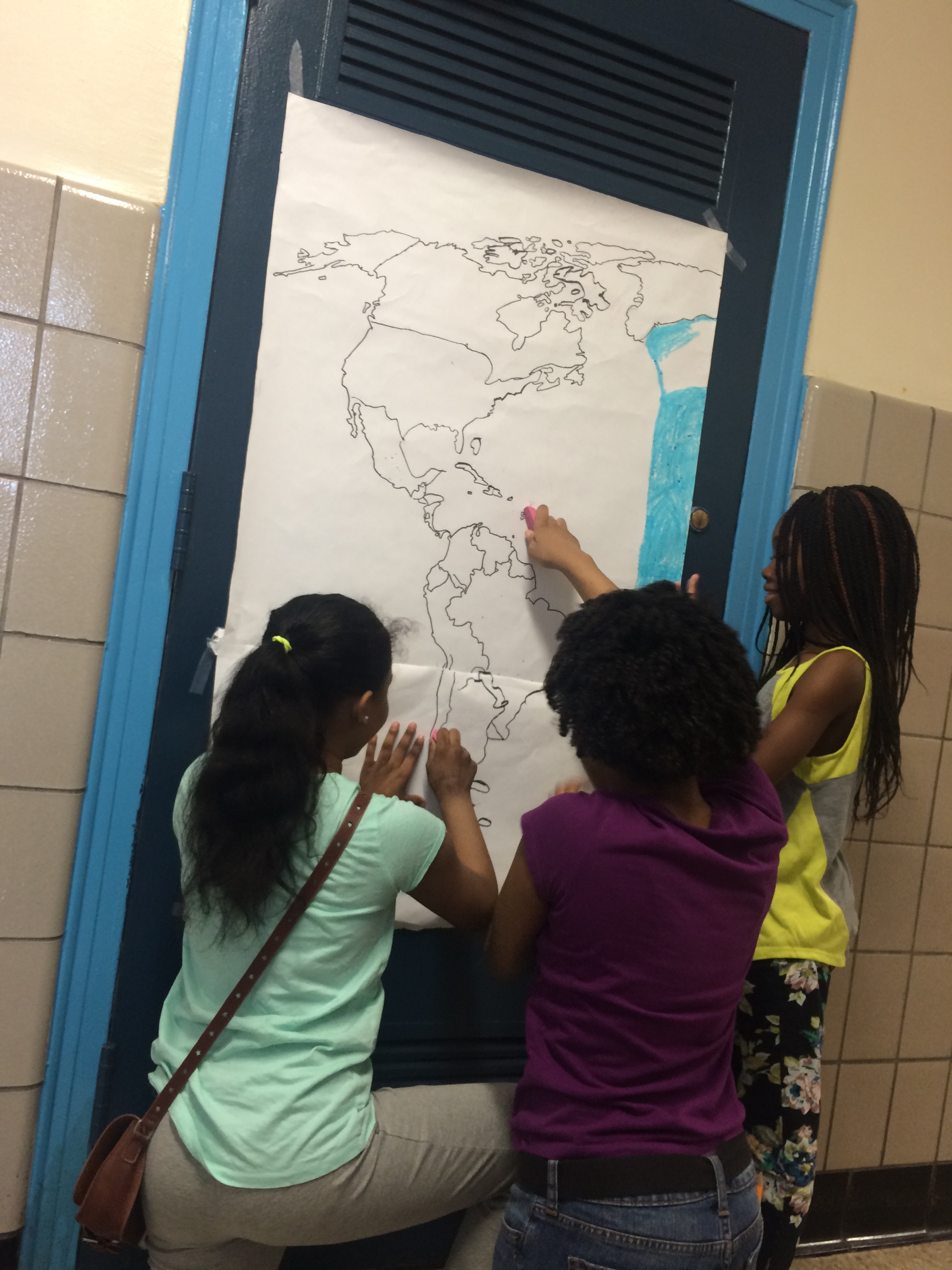DK Holland
President Trump wants to shrink federal support for our public schools by nine billion dollars to help inflate his defense budget by 15 billion dollar to protect our democracy against terrorism. But isn’t a solid public education system the first line of defense for any democracy? All that’s good follows a good education.
Calculating the financial gamble
President Trump wants to eliminate all the buttressing that supports our public education. For instance, he would eliminate after school programs in high poverty schools also known as the 21st Century Learning Grants. He would whittle away at Title I individual programs (i.e. support for kids of poverty). He would obliterate Title II programs (i.e. funds used for a variety of purposes, from recruiting and retaining teachers to reducing class size or providing professional development) also known as Impact Aid support payments. Medicaid that special education of students with special needs rely on would also be severely cut.
In addition, Education Secretary Betsy DeVos thinks the federal government should allow for vouchers or scholarships so that parents may pick and choose the school their child attends: public, private, charter, or parochial. While freedom of choice is a high ideal, this seems to be blatantly elitist. How could vouchers or tax credits possibly cover tuition in a private school? And since only public schools are required to hold to an agreed upon standard, moving kids to schools without this agreement would only weaken the national school system. The vast majority of kids in the US – 50 million of them – currently attend our public schools. Of those children 50% (or 25 million) live in poverty and are limited in the schools they can attend, economically and/or geographically. Right now, since we ensure all kids have access to a public school with relatively strong standards, all children are given a shot at reaching their true potential. Trump wants to take that away from the most vulnerable children.
What have been the benefits of our public education?
There are many amazing schools and also troubled schools – whether public or private – in our country. But one big distinction is that only public schools have to follow a state curriculum which reflects what 21st century learners must master to become successful adults. To maintain this standard many, if not most, public schools require their teachers to have a higher degree and rigorous teaching experience which ensures quality teaching. In states where unions protect teachers’ rights the integrity of the teaching profession is itself protected.
On the other hand, many independent, private charter and parochial schools may innovate quickly. But that also means loosening or reinterpreting what a good education is. For instance, some private schools don’t necessarily have to include science, math, writing, reading and/or social studies in their curriculum. A private school may only teach how to curtsy and pour tea if it wishes. Some parochial schools don’t teach English.
In addition charters and private schools have no mandate to teach children with learning challenges or disabilities whereas public schools must welcome all children even those with whom they struggle. This inclusion has proven to be, in fact, enriching: 95% of students with special needs are currently taught in a regular public school classroom. Where would these children be taught (or would they be taught at all) if we destroy our public schools?
Also some private and charter schools don’t think its necessary for teachers to have teaching degrees. Schools without unions can hire/fire staff at will and impose very long work days and low wages on teachers. There is no accountability for quality of teaching for these schools on a state or federal level.
Charters often give a promise of a turn around for a neighborhood in distress. The aftermath of Katrina in 2005 provided the opportunity to cause the strategic implosion of the New Orleans public school system: 4,500 teachers of color were fired practically over night. Without any coordination or consent from the community, all school administrations were replaced with young, unseasoned teachers and others brought in from outside the community. NOLA schools are now almost 100% charters. The data on strong improvement that is often touted seems manipulative. For instance before Katrina, the Student Performance Score threshold was 75. After 11 years of charter schools that threshold was just lowered to 50.
Moving from a public school to a charter system in New Orleans may have seemed like a miraculous education turnaround but, at the very least, it seems like a disaster since it eliminated the cultural DNA their public schools had provided. By trying to solve a perceived problem, the authorities who orchestrated this takeover created several more.
Public ed is on the upswing
Our public schools have shown many improvements in the past decade. Test scores are up. School suspensions have plunged. The number of grads going on to college has risen significantly. The gap is narrowing between white and nonwhite youth succeeding in school. Teacher / student ratios have improved. Teen pregnancies are down. But many schools have a long ways to go. And higher risk children still tend to drop out in middle school if they don’t see the relevance to them. But we have to approve solving these big hairy problems using the critical thinking tools we wish students to have, don’t we? To do this, we need financial support from the federal government.
Getting caught in the justice system
What would a child do with less than an eighth grade education? What kind of jobs would they be able to get? Even though we've seen reductions in prison populations, the pipeline to prison is filled with kids who, having left school, turned to dubious ventures for income and got caught in the justice system; kids futures are often desperate and hopeless without a good education.
A full 70% of prisoners lack a GED. And the annual cost of keeping one inmate in prison is between $25,000 and $168,000 depending on location. Since the US currently provides $12,500 per year for a child’s education a child that doesn’t make it through school and becomes incarcerated costs us, at a minimum, twice what it costs to keep them in school for each year they are in prison. This causes a drain on our economy while keeping kids motivated to stay in school could be a boon.
And, of course, as anyone who lived though the bad old days of New York City, Los Angeles or Detroit can attest, the costs of high crime are devastating and incalculable. If we watch the public schools backslide or worse, crumble, our overall sense of insecurity and the divide between the haves and have nots will become cavernous as crime climbs back up.
Even with the improvements I've cited in our public schools we have a long way to go before we reach stability. Kids need to see school as relevant and engaging. This means investing more, not less, in our public schools.
So the potential – to eliminate poverty and therefore strengthen America – depends on strong support for our public schools. But if, in fact, DeVos gets her way: we could see a nose dive in all the gains we’ve made and see a huge increase in economic and social costs. The fabric that is our democracy will shred.
My family’s legacy
My family rose to join the upper middle class in the 20th century. We all benefited from the entitlement of a free public education system. I’m a 70 year old white female. My two sisters and I as well as most of my cousins went to public schools in the 1950s and 60s. Our parents, uncles and aunts and grandparents before us all attended public schools.
Along the way we got to know many families who also benefited from a public education, families that represent the cultural, racial crazy quilt that is our United States. And we are all living proof that the first line of defense in any democracy is a solid public education system.
That all else that’s good follows.
DK Holland is a journalist, design thinker and champion of children. She is the co founder of Inquiring Minds USA which brings civics and inquiry into elementary schools. Inquiring Minds is the founding member of 1776 NYC as well as a member of Civic Hall. DK also graduated from the first class of the TED residency.
Main source of statistics: National Center for Education Statistics
In addition:
NPR School Suspensions Have Plunged: We Don't Yet Know If That's Good News
New York Times: City’s Annual Cost Per Inmate Is $168,000, Study Finds
http://www.prisoneducation.com/
http://www.governing.com/gov-data/education-data/state-education-spending-per-pupil-data.html
Can we effectively integrate our NYC public schools?
Over half of the population in the US right now is of color. This new majority minority is showing up in Pre K and Kindergarten, all around the country. And nowhere is this reflected better than in New York City public schools in which one point one million students are enrolled, 176 languages are spoken and only 15 percent of children are white.
Our public schools are a wonderful blend of America’s vast cultural tapestry, but factor in that the income levels of many families in New York are at the poverty level, and our public school system also doesn’t just represent the most racially segregated but also the most economically segregated in the country.
Kids are straight shooters
I’ve been working with dozens of 8–11 year olds for over two years in a high poverty segregated elementary school in Brooklyn. Its humbling to work with kids who are much more straightforward than adults. These generous, creative, eager children are the future. They are, like all children, pure potential. But they are segregated. Together with the school I’ve been co-creating, with two adult counselors and about 80 kids, Kids’ Councils in 3rd, 4th and 5th grades which primarily take place after school and are democratically run by the kids themselves with as little adult involvement as possible, in their own classrooms.
I’ve also immersed myself in the life of the school to understand the rules, challenges and opportunities that are typical so I can better relate to the concerns that affect the children in all public schools in New York City.
Parents of means are now able to maneuver the system to get their kids into ‘better’ public or private or charter schools whereas typical New York City families may not be able to do this, and are simply left to whatever schools may be readily available. And choice education options get harder to navigate in middle and high school. Since the promise of the public schools is to provide a good, free education for every child, under-resourced schools struggle to stack up in terms of excellence, performance.
We do better when we integrate
Research shows clearly and undisputedly that we all do better when we integrate. Corporations strive to bring in employees from different backgrounds as do institutes of higher learning. This integration is considered valuable. Yet we maintain racially and economically segregated public schools which do not always graduate students who have the experience and relationships that provide this enrichment in the workforce and society in general.
We need to raise the bar of excellence and increase resources for all. By integrating our public schools all kids will learn to work together therefore we need to get all parents interested in integrating our public schools.
New York City’s Mayor de Blasio has called for public schools to bring their enrollment up to include 40% students of high poverty. This is courageous and necessary but I am filled with trepidation. How will this be accomplished to have the best results — to nurture confident, spontaneous, savvy and innovative children ready to tackle the opportunities and challenges of a crazy quilt world?
Educator Dr. Patricia Crain de Galarce says,
“We need cultural competencies and responsiveness in our public schools if we are to create inclusive environments where all children succeed. Without understanding and valuing differences, we are setting up kids and communities to fail.”
In the over two years that I’ve been working pro bono in a public school in District 13, Brooklyn, New York. I’ve fundraised to keep Kids’ Council free to all — to not add to the financial burden of the school or the parents. Neither could afford it. As a white woman, home-owner and neighbor, I have had a stake in District 13 for 33 years. I’ve been engaged in many ways as my beloved north Brooklyn — a community historically of black families which has recently evolved to include many young white families.
Here are some of the questions that arise for me, working with educational professionals in New York City public schools, regarding challenges high poverty children face:
What happens when a student comes into a school system where the faculty and administration doesn’t reflect them culturally?
What about that child’s parents who work two jobs and suddenly face the call to engage in the PTA, not to mention teacher/parent meetings and all the attendant extracurricular activities of a school?
What about the child who comes hungry to school every day? The child who sleeps on the couch, has no privacy at home?
What about the child who has just been ‘counseled out’ of a charter school because they can’t deal with his disabilities? How is that child accepted into this new public school as a peer?
What if that child just wants to be heard but cannot find any ‘way in’?
What if that child has trouble at home? Or the child whose parents don’t speak English so have never been able to read to this child in the language of the land?
We must integrate our schools but in the process we cannot shove fragile round pegs into rigid square holes. We need to nurture what we love about each and every one of these kids; that they are unique, valuable and capable human beings, each in their own way. Each child, ultimately finds his/her own way. Each child (of poverty or means) comes with a back story and that child will either thrive or whither in the public school environment. We need all to thrive.
Yet largely due to safety concerns, many public elementary schools can feel like prisons into which children must enter and leave every week day. School administrators may be unable to make changes — because, let’s face it, bureaucracy is necessary in a school system the size of New York City’s. But there are solutions, even within this rigidity.
Allow kids agency in their classroom
I’ve found giving the children some say in their learning in elementary school clearly makes a huge difference in their attitude and perspective. Schools in which educators listen to the kids about how to improve their environment are poised to evolve.
This is exactly what I’ve been doing in Kids’ Councils for two years: The kids hold elections in their classroom, set agendas, take minutes and run meetings. They call for votes. Take action. And, of course, they have fun. They enrich their entire cohort by relating empathetically peer-to-peer and, in the process, they are motivated to mature. Overall, they improve their classroom (and help take the pressure off their teachers) by adopting a learner-centered attitude. They talk in a new way to the educators in their school. And to do this in a school population of students that reflects the real, diverse world is ideal.
The delight is the kids
The biggest delight for me (and I think all the smart, passionate educators I’ve been honored to work with these last two years) has been each and every individual child: they are natural egalitarians. They can be solutions-oriented — even in third grade — just with an exaggerated sense of fairness and equity. So if you put them in a situation, even in the early grades, where they have to make and articulate their own decisions, you see them rapidly develop confident, independent and nuanced thinking processes.
Ages 8 and up are the ages when children start to understand the concept of ‘future’ and start to imagine themselves in it. I’ve found even the most challenged child may have big dreams. If they change their trajectory by even a few degrees, this is a huge advance for them longterm.
Kids and parents have much to gain from being in a racially and economically diverse school — one that reflects the real world. We need to look for commonalities — ways for kids to imagine making these shared dreams come true.
Kids can come together face-to-face on their own terms — kids who are different from themselves economically and/or racially – to develop a sense of inclusion — a community in which they each have a self-defined place. Done well, in Kids’ Councils, the children will create dynamic dialogues that bode well for all their futures. Our future. The world’s future.
http://www.bloomberg.com/news/articles/2015-06-25/american-babies-are-no-longer-mostly-non-hispanic-white
http://www.cccnewyork.org/blog/understanding-diversity-in-nycs-public-schools/























